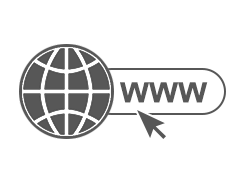 Back in 1994, Komaya’s co-founder Saurabh delivered a talk at the North India Corporate Consortium (over 500 technology companies represented) on “What is the Role of the Home Page in the Corporate World?” At that time, many of the company executives commented to him: “I know that my company needs an internet presence, but I don’t really understand what that means”. For many, they simply felt that the website was like a document that explained about their company. There wasn’t much concept about the Home page, or any other site pages. The gist of his speech was in conveying why a home page is important and what should be contained on it.
Back in 1994, Komaya’s co-founder Saurabh delivered a talk at the North India Corporate Consortium (over 500 technology companies represented) on “What is the Role of the Home Page in the Corporate World?” At that time, many of the company executives commented to him: “I know that my company needs an internet presence, but I don’t really understand what that means”. For many, they simply felt that the website was like a document that explained about their company. There wasn’t much concept about the Home page, or any other site pages. The gist of his speech was in conveying why a home page is important and what should be contained on it.
Here are a few of the points and guidelines that were presented:
- Go to your Sales department and discover what makes a customer interested in what your company is offering.
- Think about how people will reach your company website. For many, it will be because they used a search engine (e.g. Archie, Gopher, AltaVista) looking for some specific service or product.
- If people aren’t interested by what they see on your Home page, they will quickly leave. Your message needs to be conveyed very succinctly.
- Don’t put too much information on the Home page. A good rule to follow is to keep it under the ‘three-scroll point’. If you have more than 3 scroll pages of information on the home page, it’s too much.
- Don’t simply include facts about your company’s history.
- Do state what your company does and the products/services offered. This is not the place to go into all the variations and sub-products available, but a summary-level.
- Do be sure to include how to contact your company, provide your company support phone number and email address.
 Fast forward 22 years and now, even though all company executives know what a web presence means, work still remains in understanding what should be (and shouldn’t be) on the Home page. For the most part, those 1994 guidelines are still very much valid today. Websites have greatly evolved over the last 2 decades to the point now where sometimes the important message can be lost. With the advances in technology, web design concepts, and media elements, a website can quickly become all whiz-bang and flashy, at the expense of the message no longer being clear on the home page. So now may be a good time to take a fresh look at your website from the perspective of the 1994 guidelines. The basics really haven’t changed; we just have fancier ways of explaining them:
Fast forward 22 years and now, even though all company executives know what a web presence means, work still remains in understanding what should be (and shouldn’t be) on the Home page. For the most part, those 1994 guidelines are still very much valid today. Websites have greatly evolved over the last 2 decades to the point now where sometimes the important message can be lost. With the advances in technology, web design concepts, and media elements, a website can quickly become all whiz-bang and flashy, at the expense of the message no longer being clear on the home page. So now may be a good time to take a fresh look at your website from the perspective of the 1994 guidelines. The basics really haven’t changed; we just have fancier ways of explaining them:
- 1994: Go to your Sales department and discover what makes a customer interested in what your company is offering.
- Today: Identify target audiences and personas.
- Who uses the sites and what parts?
- Who are your customers?
- Are you targeting / reaching all industries?
- Who do you want to reach?
- 1994: Think about how people will reach your company website. For many, it will be because they used a search engine looking for some specific service or product.
- Today: Search Engine Optimization (SEO)
- Review search analytics, industry analysis, common search terms.
- Configure all site pages for SEO with meta information, keywords, titles, short description.
- 1994: If people aren’t interested in what they see on your Home page, they will quickly leave. Your message needs to be conveyed very succinctly.
Today: Value Proposition
Prominently displayed on the Home page, and any other entry page, and explains how the product/service will benefit the customer. Typically comprised of:- Headline short statement, this is the key attention grabber that makes them want to read more.
- Sub-headline, a few sentences (1-3) that further explain the value proposition, what you offer, for whom, and what sets you apart.
- Short list of key benefits and/or features.
- Pertinent image or video.
- 1994: Don’t put too much information on the Home page. Good rule to follow is to keep it under the ‘three-scroll point’. If you have more than 3 scroll pages of information on the home page, it’s too much.
Today: Seems to still be a good general rule of thumb, though I would consider increasing it to 4 due to today’s usage of graphic elements. The main point here is to use the Home page wisely, place additional content on subpages. If the visitor is interested in your offering, then they will click further for more information.
- 1994: Don’t simply include facts about your company’s history.
Today: Use the ‘About’ sub-page for this content. The Home page should stay focused on showing what your company has to offer to your target audience.
- 1994: Do state what your company does and the products/services offered. This is not the place to go into all the variations and sub-products available, but a summary-level.
Today: See Value Proposition above. A compelling Home page should clearly show your company’s key message, key benefits, and features.
- 1994: Do be sure to include how to contact your company, provide your company support phone number and email address.
Today: Call to Action points
The user should always know what to do next. Make it easy for them to take the next step.- Identify the Call to Action (CTA) points on the home page and throughout the site.
- The CTA should clearly show the next step you want the prospect to take. Purchase a product, request a demo, download an industry document, contact us, etc.
With the new school season upon us, now is a great time to get ‘Back to Basics’.
Definition: Back to Basics
[bak-tuh–bey-siks]1. stressing simplicity and adherence to fundamental principles. http://www.dictionary.com/browse/back-to-basics
2. brass tacks (informal) core, essentials, facts, fundamentals, hard facts, necessaries, nitty-gritty (informal) nuts and bolts (informal) practicalities, principles, rudiments. http://www.urbandictionary.com/define.php?term=Back%20to%20Basics